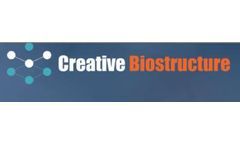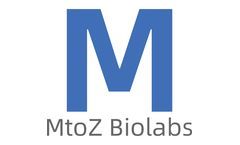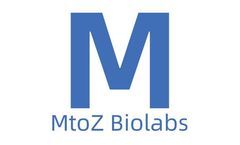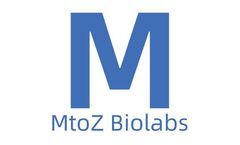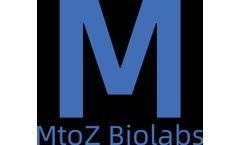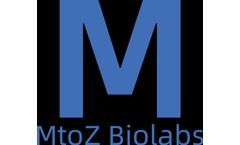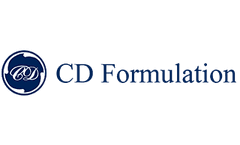Refine by
Spectroscopy Articles & Analysis
53 articles found
In these situations, even minor limitations in monitoring capability can lead to hypoxemia, a leading cause of morbidity and mortality during surgical procedures, making accurate and responsive oxygen concentration monitoring a critical safeguard for patient outcomes.4Recognizing the vital importance of precise oxygen monitoring, Cubic, an international manufacturer of advanced gas sensors and ...
This technology enables the detailed identification and quantification of lipids and metabolites from small samples like exosomes, which are typically limited in number. NMR spectroscopy is another useful technique in metabolomics, providing structural information on metabolites. ...
Mass Spectrometry (MS)(1) Mass spectrometry is a highly sensitive and accurate analysis method that can be used to identify and quantify the mass and composition of chemicals.(2) When combined with liquid chromatography (such as LC-MS) or gas chromatography (such as GC-MS), this technique can provide detailed information about trace components in the medium.3. Ultraviolet-Visible ...
The content of collagen can be accurately determined by comparing the chromatographic peaks of unknown samples with those of standard products with known concentrations.SpectroscopyUltraviolet-visible (UV-Vis) absorption spectroscopy can be used to measure the concentration of collagen, as proteins absorb ultraviolet light at specific wavelengths (such as 280nm). ...
Common methods for protein concentration analysis include the Bradford method, the Lowry method, the BCA method, and the ultraviolet absorption spectroscopy method.The Bradford method is a protein concentration determination method based on dye binding. ...
Ensuring the purity, concentration and conformational stability of the drug is crucial, which not only relates to the efficacy of the drug, but also affects its safety.Ultraviolet spectroscopy technique is based on the absorption characteristics of antibody proteins to specific wavelengths of ultraviolet light, and can provide rapid and non-destructive detection of drug ...
Spectroscopic MethodsInfrared spectroscopy and Raman spectroscopy can also be used to analyze the glycation structure and changes of collagen.These methods can be used separately or in combination to obtain a comprehensive understanding of the structure and function of glycated collagen.The detection of glycated collagen is also one of the methods used to assess ...
Through specific immune reactions, the target protein and the proteins it binds to are "captured". By using protein spectroscopy and other means for identification, the interactions between proteins can be understood. ...
Probing ribosome-nascent chain complexes produced in vivo by NMR spectroscopy. Proceedings of the National Academy of Sciences. 2009 Dec 29;106(52). ...
The detection methods for glycosylated impurities are diverse, including chromatography, spectroscopy, electrophoresis, etc. Among them, High-Performance Liquid Chromatography (HPLC) is the most commonly used detection method, which can effectively separate and quantitatively analyze glycosylated impurities, with simple operation and good repeatability. ...
Nuclear Magnetic Resonance (NMR) Spectroscopy NMR spectroscopy plays a critical role in structural elucidation of ADCs. ...
Ultraviolet-Visible (UV-Vis) Spectroscopy(1) PrincipleUV-Vis spectroscopy utilizes the absorption characteristics of proteins in the ultraviolet region (especially around 280 nm) to monitor structural changes.(2) OperationMeasure the ultraviolet absorption spectrum of a collagen solution at different temperatures. ...
Studying the distribution of DAR values helps to understand the overall fate of ADCs and provides a theoretical basis for ADC biotransformation in vivo. UV/VIS spectroscopy is widely used to determine antibody concentration and DAR value, but this method is a buffer system and cannot be applied to complex biological systems such as plasma/serum. ...
Hydrogen is the most common target nucleus (1H-NMR), while other atoms such as carbon (13C-NMR) and phosphorus (31P-NMR) can also be used to obtain information on specific metabolite types by NMR techniques. Currently, 1H-NMR spectroscopy, 2H-NMR spectroscopy, and high-resolution magic angle rotation (HRMAS-NMR) spectroscopy are common. ...
Based on the principle of TDLAS (Tunable Diode Laser Absorption Spectroscopy), Gasboard-2510 oxygen sensor could realize high accuracy and excellent repeatability, with a measurement range of 0%~100% level and a resolution up to 0.01. ...
Analytical techniques such as chromatography, spectroscopy, and mass spectrometry are commonly used in pharmaceutical analysis to identify and quantify active pharmaceutical ingredients and impurities. ...
Nitrogen-15 is often used in Nitrogen-15 NMR spectroscopy. Unlike the more abundant14 N,15 N has one-half the fractional nuclear spin, which provides the advantage of a narrower line width for NMR. ...
Structural information can be obtained using X-ray diffraction (for AH adjuvants only), spectroscopy (FTIR, NMR, Raman) and transmission electron microscopy. Granularity Aluminum adjuvants typically consist of primary nanoparticles that form irregularly shaped aggregates ranging in size from 1 to 20 μm. ...
While advanced analytical techniques like mass spectrometry (MS) and nuclear magnetic resonance (NMR) spectroscopy provide valuable information about the mass and structure of metabolites, confidently identifying metabolites from complex spectra remains a complex task. ...
Nuclear Magnetic Resonance (NMR) Spectroscopy Nuclear Magnetic Resonance (NMR) spectroscopy emerges as a non-destructive and versatile technique for bile acid analysis. ...


